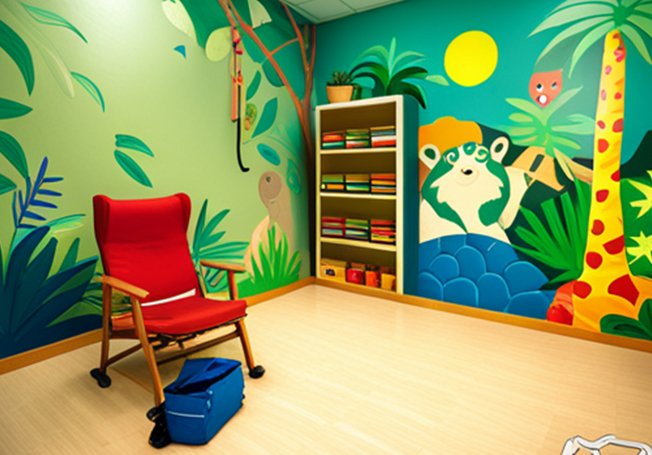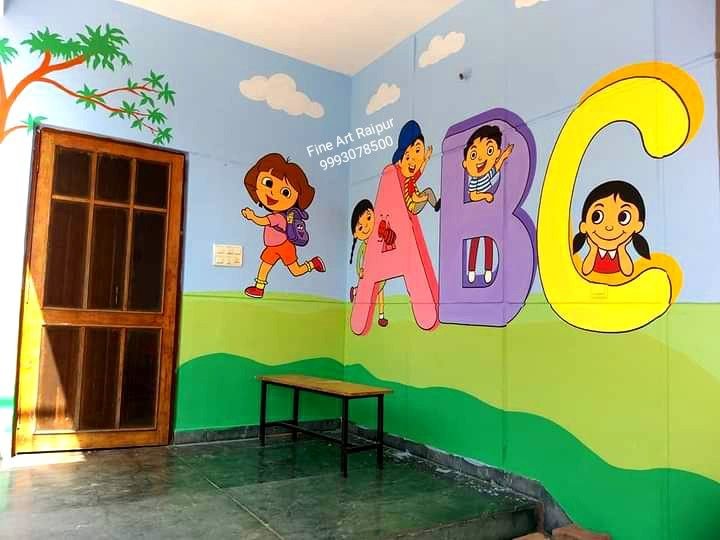Painting is an art form that adds extra value to the walls of schools that informs students more in less time. Quality paintwork goes beyond just beautification and sets the stage for a warm, stimulating, and colourful setting where individuals learn and grow. Wall paintings specially designed in school have a great impact on the human mind in general, and in education where cognitive development and emotional well-being take a paramount position.
Table of Contents
The Importance of Painting for School Walls
School wall paintings can make students’ experiences in a school far more delightful and pleasant to enjoy. Painting at school is much more than a decoration activity-it’s the planned work of an environment that encourages learning and development. A very profound impact is left on the human mind through school wall paintings, especially within the boundaries of an educational place where the process of cognitive development and emotional well-being plays an important role.
Types of the Painting for School Walls
The type of painting for school walls can greatly influence the learning environment and the overall ambiance of the school. Depending on the location within the school, the age group of the students, and the intended message, different types of school wall paintings can be utilized.
1. Murals

Murals are paintings on school walls that are large in scale and can be as big as a whole wall or most of a wall. They are great for high-traffic areas, such as hallways, libraries, or common spaces that can create a large visual impact. Being able to convey themes related to education such as the solar system, historic events, and scientific processes, murals are highly versatile and engaging. Moreover, they may incorporate motivational quotes or themes promoting cultural diversity, achieving multiple school purposes at once. What a gift it is to appreciate beauty and to learn, all at once.
2. Interactive Paintings


Another area of painting for school walls is to include interactive elements that draw the students in. Any kind of interactive paintings can be considered including chalkboard walls, whiteboard walls, or even spaces in which students can add their thoughts or drawings, or their own contributions. Drawings like this have a very dewe-school ability in terms of creative collaboration and problem solving, meaning in the event of school-age students, you as well as each person train within the primary angling. These help turn wall art into places where students can co-create with the artwork, adding to what the artist has left for them, making it feel dynamic, and helping them take ownership of their learning environment.
3. 3D Wall Art


School wall paintings are enhanced with 3D wall art that adds depth and texture for a multidimensional experience. These kinds of pieces could include raised surfaces, textured elements, or mixed media components that extend from the wall. Art rooms, science labs, or entrance foyers are examples of space that lend themselves to the use of these great pieces, and it really helps to capture attention and leave a lasting impression when walking past it. This form of school wall paintings serves a visual purpose but furthermore activates the senses of students and creates an environment that is more memorable for the students and stimulates them.
4. Motivational Quote Walls


School wall painting ideas with motivational quotes revolve around positive affirmations, words of wisdom, and inspirational messages that motivate students every single day. These types of wall writing are often hung in hallways, classrooms or positioned neatly near an entrance to set the tone of a school day. These paintings are designed to inspire students and create a space for positive and motivating students by quoting revolutionists or motivating phrases. They are an indication of what the school community collectively believes and works towards.
5. Thematic Classroom Walls


Thematic Classroom Walls — A thematic classroom wall around a specific subject or broader educational topic can serve as visual reinforcement of what is being learned in that subject. For instance, geometric shapes and mathematical equations might decorate a math classroom, and a history classroom could highlight a timeline of important historical milestones. What better way to immerse students in the subject matter than to incorporate it right into the walls of the school? They assist in bringing out abstract concepts to life and reinforce the curriculum in a visual manner.
6. Jungle-Themed Kindergarten Wall Painting


A jungle-themed mural painting for school walls, thus, can turn a kindergarten classroom into a colorful and vibrant natural setting. These paintings depicting different animals, birds, and plants enliven the wall and introduce children to nature at a young age. Through Mowgli, the mural can relate valuable messages of coexistence between humans and wildlife.
7. Honor Great Leaders with Inspiring School Wall Paintings


And, we had well known leaders whom we could look up to, painting leaders on school walls. Including a portrait of these great leaders or a depiction of it in the school wall paintings not only enhances the look of these paintings but also reminds students of these leaders and their virtues. These murals tell students everything they need to know about becoming one of these role models themselves — to follow in the footsteps of those who have worked hard and shown great leadership traits to provide for their families and propel the town forward.
8. Celebrating Diversity Through School Wall Paintings


Art in the form of paint can be posted on school walls that celebrate youth culture, diverse cultures, and community and it can go a long way in teaching respect and inclusion. To educate students about the rich diversity of cultures around the world, schools can promote this diversity through wall paintings that represent multiculturalism through traditional clothes, festivals, and landmarks. In schools with a rich cultural diversity, it is a powerful tool, because diversity is not only acknowledged, but understood in all its aspects, including appreciated.
9. Boosting School Spirit and Values Through Wall Paintings


Painting for your school’s walls that depict school’s motto, guiding principles, mascot, and achievements on the walls can go a long way in boosting the school spirit among students. School wall art displaying the school mascot, colors, and logo in high traffic and prominent locations like the gymnasium, cafeteria, or main entry help reinforce school pride.
10. Cartoon Character Wall Paintings for Schools


Painting for school walls featuring beloved cartoon characters can create an engaging and enjoyable environment for students. One popular choice is incorporating characters from “Dragon Tales,” a favorite among children. This series, which addresses various sibling issues and offers practical solutions through the adventures of the dragons, can be effectively represented in school wall paintings. By integrating these familiar and cherished characters into the classroom décor, schools can create a welcoming and relatable atmosphere that resonates with students, making learning spaces more vibrant and inviting.
The purpose on painting on school walls is way bove just decoration. It facilitates the learning process, promotes cognitive development, and creates an inclusive atmosphere as a vital component of education. School wall paintings that are thoughtfully planned and executed can transform educational spaces and make them more welcoming, stimulating and inspiring for both students and teachers. With schools innovative finds modern technology that melds with traditional murals enhances such benefits, designing a beautiful yet functional future ready learning environment.
Read Next
Fascinating Wall Art Canvas Painting for your thoughts Bedroom
13 Wall Frames Decorating Ideas
Best 5 Tips Choosing the Interior Wall Art for Your Apartment






